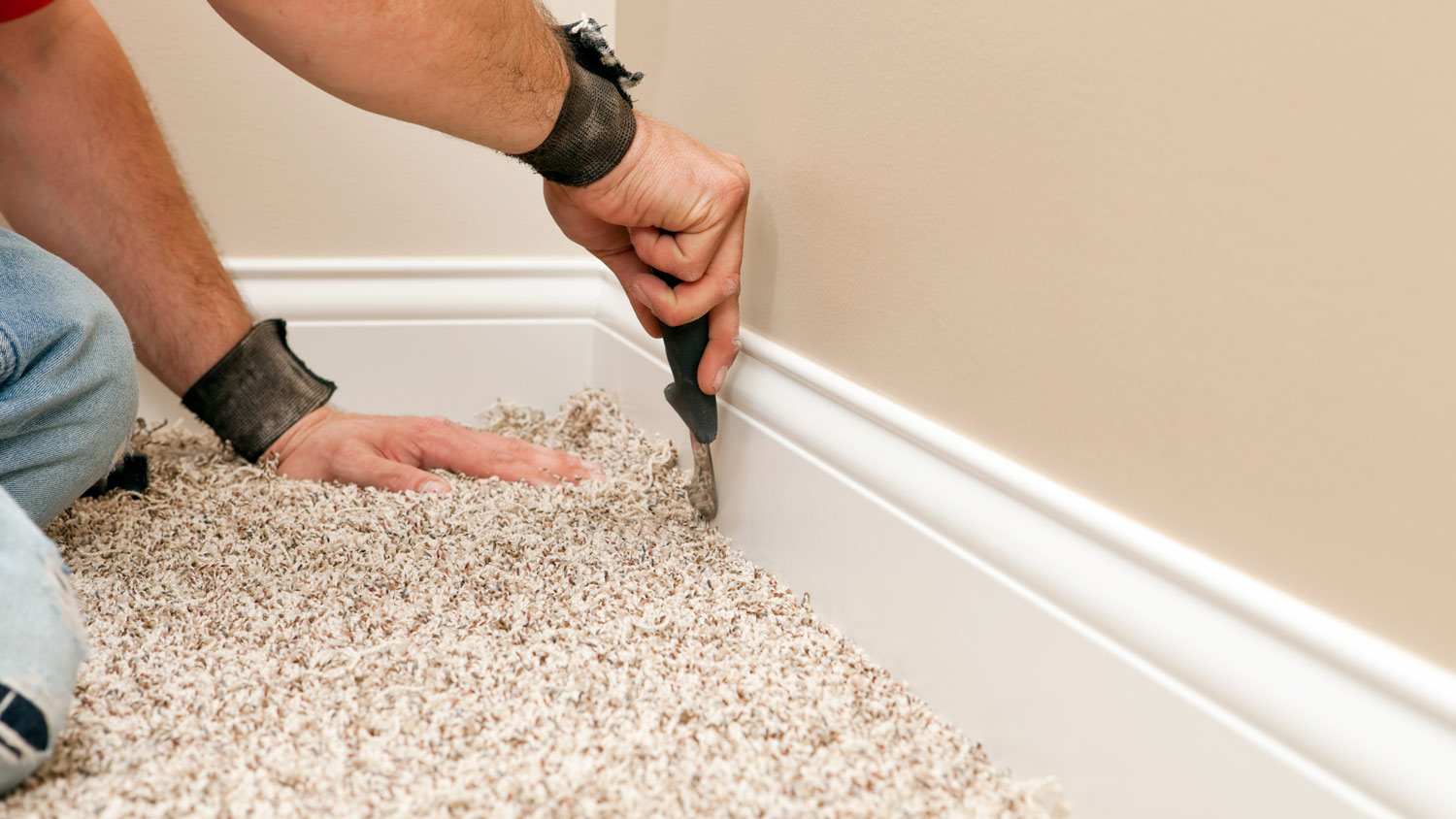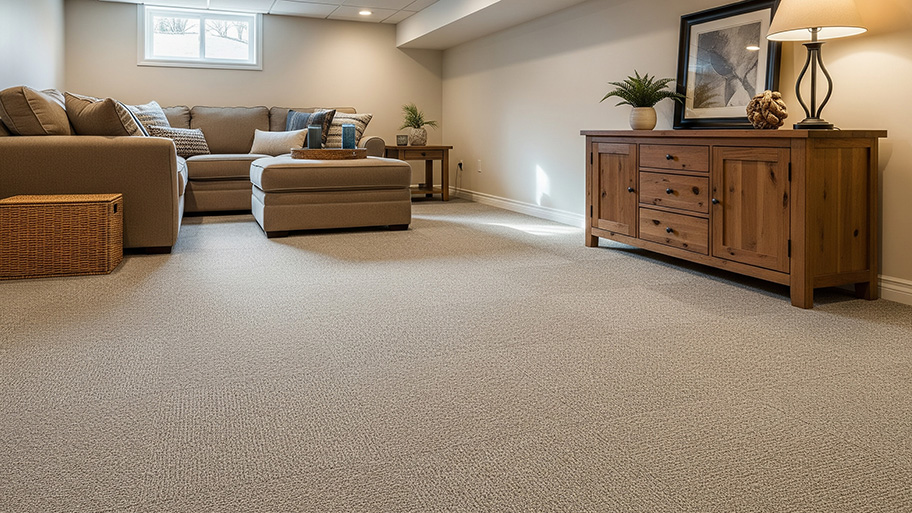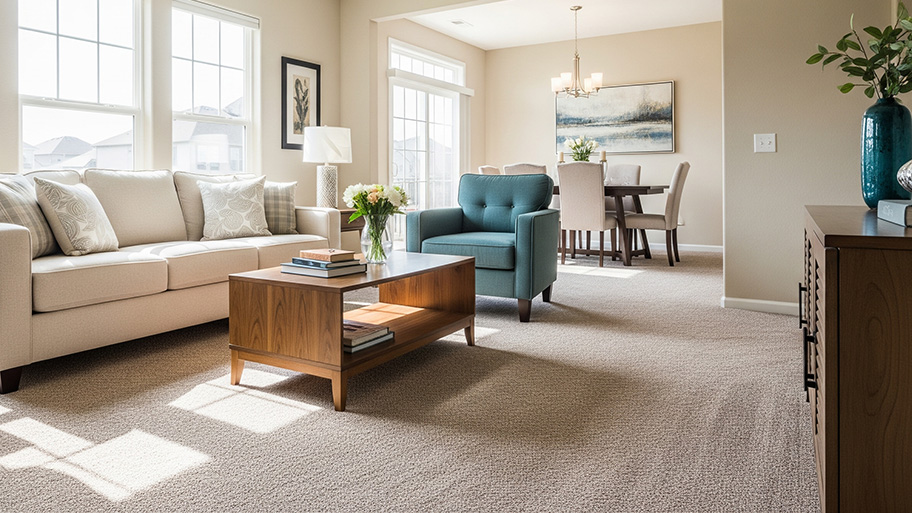
Get a clear estimate for carpet repair cost. Learn what impacts pricing, compare repair types, and find ways to save on your next carpet project.
Act quickly to preserve your carpet and avoid mold growth


A burst pipe, a backed-up drain, an internal sprinkler system, or a leaky appliance—there are many potential sources of water damage throughout your home. Regardless of what caused the flooding, it’s important to take action quickly to prevent further damage and mold growth. But what do you do specifically if your carpet gets soaked? Let’s discuss how to get water out of your carpet to get your living space back to normal as quickly as possible.
Before you begin trying to soak up the water and dry out the carpet, you need to figure out why the carpet is drenched in the first place and take care of the issue. Otherwise, you’ll just continue to see the same problem again and again.
It could be a broken appliance, flooding from a storm, a burst or leaky pipe, or something else entirely. But you’ll want to call a local water damage restoration specialist, an emergency plumber, or a leak detection specialist to find and fix the issue as soon as possible. Until it’s fixed, you risk more water seeping into your carpet, and all of your drying efforts will be undone.
You should understand the categories of water damage that can affect your home, too. For clean water from water supply lines, rain, flooding, or snow, plumbers, water damage restoration specialists, and even general contractors will be able to tackle the work. For grey water, stick with specialists or plumbers, and for black water, always call a water damage specialist.
The next thing you’ll want to do is remove all your belongings from the room, including furniture. At this time, you can inspect your furniture to see if it’s been water-damaged. If it has, you’ll also need to make a plan to dry out and sanitize your furniture before mold begins to grow.
We recommend wearing protective gloves while dealing with water damage. It’s a good idea to wear a face mask as well, especially if you have respiratory issues.
Use a wet/dry shop vacuum to suck up as much of the water from the carpet as possible. Always remember to remove the collection bag and dry filter and install the wet filter, if applicable.
Don’t rush this step. It’s important to suck up as much water as possible, going over the same area repeatedly. The more water you pull out with your vacuum, the more effective the following steps will be.
After you’ve thoroughly vacuumed up the water, use old towels to soak up any remaining moisture in the carpet. Apply as much pressure as possible to every inch of the towels to ensure they’re thoroughly sopping up the water.
Next, sprinkle a liberal amount of baking soda all over the affected area of the carpet. Baking soda is great at soaking up water deep within your carpet and also doubles as a deodorizer for any resulting mildew smells.
Leave the baking soda on the carpet for at least an hour before vacuuming it up. Repeat this multiple times, as needed.
To dry out the water-damaged carpet further, you’ll need to create airflow in the room. Turn on any ceiling fans, open all the windows, and use box fans and pedestal fans to create airflow over the affected area. The best course of action here would be to rent and set up blower fans and dehumidifiers and run them for 24 to 72 hours. These will dry out your carpet and the padding underneath to prevent mold growth after the water damage.
If you have a steam cleaner (or are willing to rent one), steam cleaning the carpet is a good idea to sanitize it and remove odors. You can also hire a local carpet steam cleaner to handle the job for you.
Alternatively, you can purchase an antibacterial carpet sanitizer to run through your carpet cleaner to prevent the growth of mold and mildew. In addition to the carpet, you should thoroughly sanitize any other surfaces that suffer from water damage.
If the water damage was extensive enough, it could have damaged the carpet padding or subfloor. You can use a carpet moisture reader (available at a hardware store) to detect the moisture level beneath your carpet or simply pull up a corner of the carpet to inspect what’s going on underneath.
If you’re not comfortable with the steps above—or if you determine that your carpet padding and/or subfloor were damaged during the previous step—it’s time to stow away the wet vac and towels and call a professional water damage restoration company near you.
These companies can do more extensive remediation to your flooring, furniture, and any other parts of your home affected by the water damage. Teams can tackle both water damage and mold in their remediation, and they can repair subfloor and floor joist damage that could result in structural issues if unaddressed.
Removing water from a carpet isn’t terribly complicated, but there are some mistakes that are easy to make that can lead to additional property damage. Here are some things to avoid while you’re getting water out of your carpet.
Failing to fix the source of the leak: It’s easy to address the symptom of the water damage and forget about the source, but that’s a big mistake. Make sure you determine why you experienced water damage and hire a water damage restoration professional to address the problem. Otherwise, you’ll continue to see water damage in the future.
Not running fans for long enough: Don’t stop running your blower fans and dehumidifiers once the carpet feels dry because the padding below could also be wet. Make sure you run fans continuously for 24 to 72 hours, depending on the severity of the leak.
Not being proactive about mold growth: Mold growth can begin just 12 to 24 hours after water damage, and it’s more likely to be an issue with absorbent materials like carpet. Start drying your carpets immediately, and don’t skip the steam cleaning and sanitizing. These will both help prevent mold from growing and returning in the future.
Failing to check the subfloor for damage: Another big mistake is ignoring that your subfloor could be damaged. At the very least, you should pull up a corner of the carpet to assess the subfloor. If you find damage or mold, call a professional for help.
Minor spills and leaks that get your carpet wet are usually easy enough to tackle on your own. Spend the day using a wet vac, towels, baking soda, and blower fans to sop up the water and dry out the carpet, and don’t forget to sanitize. In most cases, this will suffice.
But if there’s more extensive flooding, such that the carpet is heavily drenched or the carpet padding and subfloor are at risk of damage, it’s best to call a pro to tackle the issue. This is important both to prevent the spread of mold and to ensure the structural integrity of your floor.
On average, water damage restoration costs between $1,350 and $6,300, but depending on your policy, your homeowners insurance may cover some or all of the cost.
Highly recommend. Customer services was great. Everything arrived on time, installation was quick and done well. We are very pleased.
KAS installed all new Andersen windows, replaced entry doors and repaired the roof. Excellent work, timely and efficient. A pleasure to work with them.
A very good company to work with: professional, reasonably priced, and willing to go above and beyond to satisfy the customer. We had rotted wood and new aluminum roof trim installed, and the result is perfect and done on time. I definitely recommend them and will certainly use them for...
Productos e instalation exelentes, las relaciones personales con los supervisores y trabajadores fue muy buena, recomendados al 100%...
Great value because the cost for the job was very reasonable and the install was smooth and works great
The guy who did my carpet was very polite and did a great job
The service was excellent! Norwin's trap caught the dangerous bob cat in short order. I am very thankful!
very professional. They arrived on time, removed the old carpet, installed hardwood, and cleaned up after. Jennifer was our flooring consultant, and she was amazing to work with!
Brandon Burnette did such a great job. I'm so happy I had him as my worker today. Very nice and friendly young man. 10 star in my book.
We had LHR install a new roof and gutter system. While they were not the cheapest, they were considered the most reliable and fetish for using only high-value products that would last for many years. Additionally, they were highly professional and never tried to push their services or any...
From average costs to expert advice, get all the answers you need to get your job done.

Get a clear estimate for carpet repair cost. Learn what impacts pricing, compare repair types, and find ways to save on your next carpet project.

Not only are carpet tiles easier to install than carpet, but they’re often more affordable. So, how much does carpet tile installation cost? Let’s take a look.

Discover how much carpet replacement costs based on factors like the project size, the carpet material, and the labor required.

If you’re looking to cover unsightly stains in your home, dye is an alternative to replacing the carpets entirely. Here’s how to dye carpet from start to finish.

Frieze carpet is a trendy option, but is it right for your home? Consider these pros and cons of frieze carpet to help you decide.

Wool carpet is a modern luxury, but it’s not right for every room. This guide will walk you through wool carpet pros and cons.